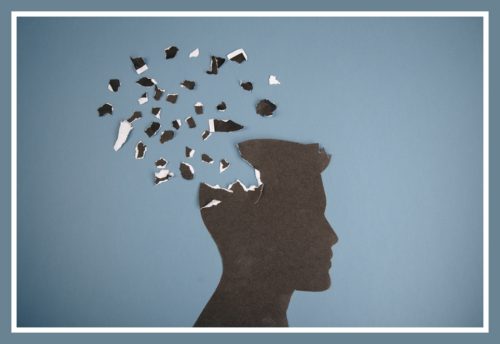 Brain injuries often contribute to permanent injury and death. Nationwide, traumatic brain injuries account for about 30 percent of all injury deaths. Every year, approximately 1.7 million people in the United States suffer a brain injury, also known as a traumatic brain injury (TBI). According to 2016-2017 data, nearly 9,000 new traumatic brain injuries will be reported in Nebraska each year. Every day in Nebraska, at least one person dies from a traumatic brain injury, three people are hospitalized, and over 24 people are treated in the emergency department because of TBI.
Brain injuries often contribute to permanent injury and death. Nationwide, traumatic brain injuries account for about 30 percent of all injury deaths. Every year, approximately 1.7 million people in the United States suffer a brain injury, also known as a traumatic brain injury (TBI). According to 2016-2017 data, nearly 9,000 new traumatic brain injuries will be reported in Nebraska each year. Every day in Nebraska, at least one person dies from a traumatic brain injury, three people are hospitalized, and over 24 people are treated in the emergency department because of TBI.
The risk of brain injury is particularly high for individuals ages 75 and older, but this type of injury can happen to anyone. Over the years, there has been an increase in concussions and other brain injuries in children ages 19 and younger. Researchers believe this is a result of sports and other recreational activities. Brain injuries may impact your life in many ways, such as your mental capacity, personality, and ability to perform the activities of daily living. Those who suffer moderate to severe injuries may require long-term care and support.
If you have a traumatic brain injury, caused by someone’s negligence, you may be entitled to compensation. You need to consult the experienced attorneys at The Robert Pahlke Law Group to learn more about your legal options.
What Is a Traumatic Brain Injury?
According to the Traumatic Brain Injury Alliance of Nebraska, a traumatic brain injury is “caused by a bump, blow, or jolt to the head; or a penetrating head injury that disrupts the normal function of the brain. TBI includes concussion and shaken baby syndrome.” The effects of a brain injury range from mild to catastrophic. Even a mild concussion can be serious, and the injured person should seek treatment. In some cases, there are no obvious symptoms, so people are not even aware they have a brain injury. Symptoms may show up long after the injury. Trauma to the head can lead to several types of injuries, including:
Concussion
A concussion occurs when the brain hits against the skull or is whipped back and forth inside the skull. It is generally classified as a minor brain injury, and the symptoms are usually temporary, but repeated concussions may cause permanent damage. The victim of a concussion may experience headaches, memory loss, lack of concentration, and disorientation.
Diffuse Axonal Injury
A diffuse axonal injury (DAI) is similar to a concussion, but with a DAI, the head moves so violently that it causes tears in the connections from the brain to the spinal cord.
Contusion
The difference between a concussion and a contusion is confusing. Fundamentally, a contusion is a localized injury, like a bruise. As with other bruises, the risks range from minor to severe. A concussion is a wider-reaching injury and usually affects more regions of the brain.
Penetrating Injury
In some accidents an object pierces the skull, causing hair, skin, bone fragments or the object itself to hit the brain. Penetrating injuries often happen in slip and fall accidents, which cause the skull to crack, a car accident in which something penetrates or breaks the skull, a sports-related injury, or a gunshot wound to the head (a leading cause of death by TBI).
Anoxic Brain Injury
A victim suffers an anoxic brain injury when the brain does not receive enough oxygen. Because blood transports oxygen to the brain, a blockage of the blood flow may cause anoxic brain damage. After just four to five minutes without sufficient oxygen, brain cells will begin to die, and brain injury will occur.
Second Impact Syndrome
If a person has already sustained a brain injury, a second or subsequent brain injury can cause even more severe damage. The effects depend on the location of the injury, the severity of the first injury, and the degree of trauma sustained. Medical experts are concerned about the second-impact syndrome in sports where participants have frequent head injuries.
Levels of Traumatic Brain Injuries
There are three basic levels of TBI injury: mild, moderate, and severe.
- Mild injury – In the case of a mild traumatic brain injury, the victim may lose consciousness for only a few seconds or minutes, or not at all. The injured person may just seem confused or disoriented. Sometimes, a mild injury may not even show up on medical tests.
- Moderate injury – With a moderate TBI, the victim may lose consciousness for up to a few hours. He or she may remain confused for a few weeks. However, physical, cognitive, or behavioral complications may last longer or even be permanent.
- Severe brain injury – Severe brain injuries are life-threatening and often have long-term consequences. Many severe TBIs come from a strong blow to the head or penetration to the skull and brain.
Symptoms of a Mild Traumatic Brain Injury May Include:
- Problems with dizziness or balance
- Frequent head or neck pain
- Disorientation
- Nausea
- Difficulty with vision or hearing
- Cognitive problems
- Exhaustion, or lack of energy and motivation
- Disturbed sleep patterns
- Unexplained mood changes
Infants and young children who have brain injuries may not be able to express how they are feeling. Therefore, it is especially important to be aware of symptoms such as:
- The same danger signs as those in adults
- Persistent or inconsolable crying
- Excessive irritability
- Change in eating or nursing habits
- Lack of focus or attention
- Change in sleep habits
- Depression
- Loss of interest in regular activities
Treatment
Each traumatic brain injury is unique, and therefore, each person requires an individualized treatment plan. Most treatment plans involve medication and rehabilitation. Treatment may take place in stages, beginning with hospital stays, possibly in the Intensive Care Unit. Once released, the injured person will probably need therapy and rehabilitation to regain motor functions. Speech, memory, occupational therapy, and other therapies help the person return to as normal a life as possible.
Common Causes of Traumatic Brain Injuries
According to the Centers for Disease Control and Injury Prevention, causes of TBIs include:
- Car accidents
- Truck collisions
- Motorcycle wrecks
- Slip and fall accidents
- Sports injuries
- Construction site accidents
- Pedestrian accidents
- Boating wrecks
- Recreational vehicle accidents
- Commercial vehicle accidents
- Workplace accidents
- 18-Wheeler accidents
- Bicycle accidents
- Physical violence
- Neglect, such as shaken baby syndrome
- Product negligence.
Call a Nebraska Personal Injury Lawyer if You Suffered a Traumatic Brain Injury

The effects of brain injury are unpredictable. They may affect your physical, mental, and emotional functioning. An injured person may find it difficult to handle relationships or return to work. He or she may need long-term care and support, which also places financial and emotional stress on loved ones. If you have been injured, it is essential to seek prompt medical treatment. Proper diagnosis and treatment improve your chances of recovery.
Most traumatic brain injury victims are left with enormous medical bills. They may be unable to return to work or may require a new type of job. All of this is complicated by physical and emotional pain. If you have suffered a brain injury, you are not alone. For further information or to consult with an experienced Nebraska brain injury lawyer, call The Robert Pahlke Law Group at (308) 633-4444 or contact us online.
